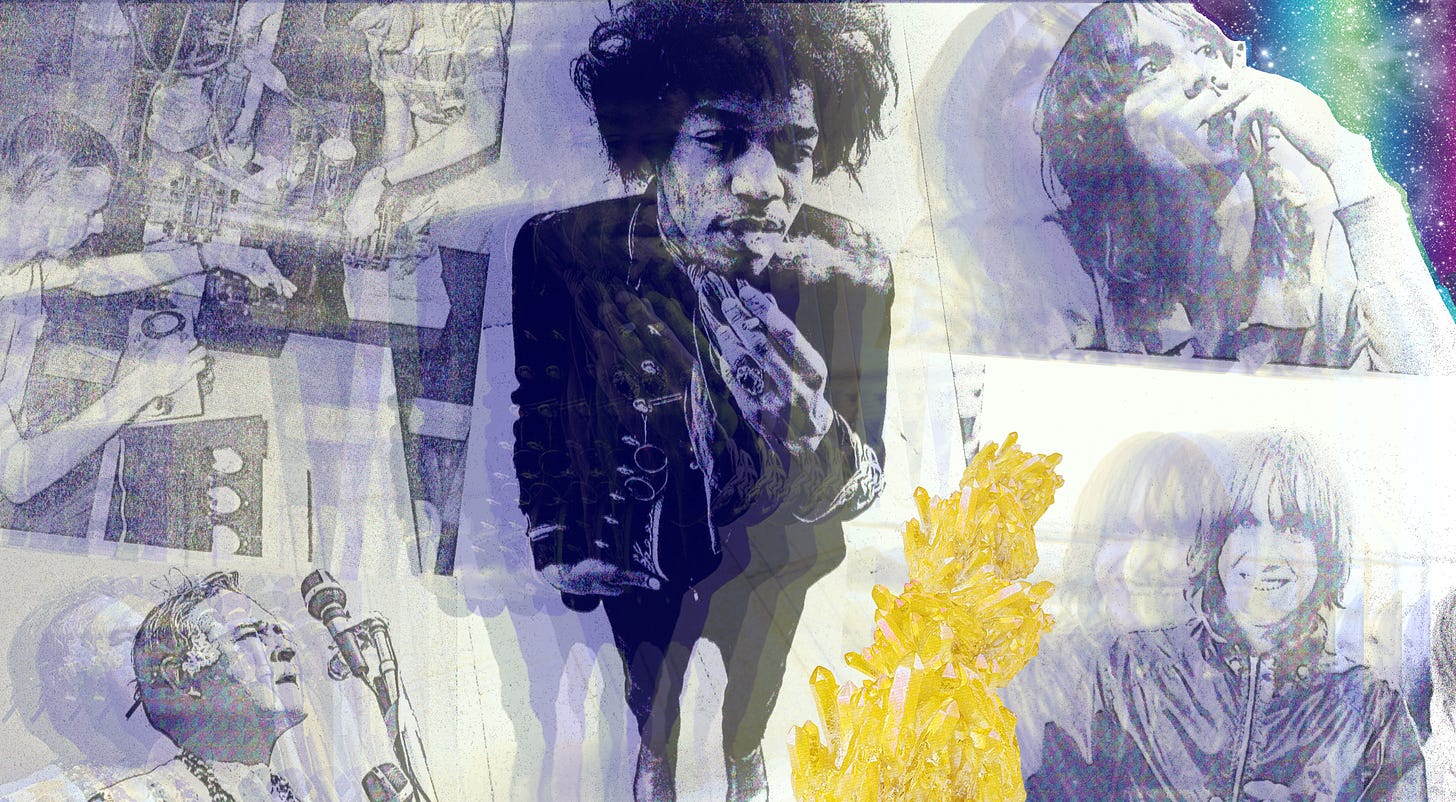The following is an excerpt from p. 142-144 of Chapter 3, “Everywhere, All the Time: DMT and Drugism” from my book, Drugism (2022):
[Note: today’s excerpt picks up where “Terence McKenna's First Hit of DMT” left off.]
In the period between Terence and Dennis McKenna’s first DMT trips (in 1965 and 1967, respectively), the drug found itself in the midst of a raid at Timothy Leary’s Millbrook estate. Then a target of local law enforcements’s anti-drug fury, Leary and his crew were busted in May 1966 by Gordon Liddy, who later became known for his role in the Watergate scandal. Although Leary had learned of the impending bust ahead of time, he chose to stay at Millbrook, lounging in one of the estate’s bedrooms and smoking DMT with his partner Rosemary Woodruff.[i]
While Leary was still high on DMT, Liddy descended on the estate with 24 officers and found their way to Leary’s bedroom. Hastily covered by a blanket, the DMT was somehow not found by the Liddy. [Note: DMT had not yet been placed under federal restriction, so even if Liddy had found the DMT, it would not have led to a conviction for Leary.] Leary was instead charged with possession of cannabis, but the “weed” Liddy found turned out to be peat moss, and the charges were soon dropped. While Leary did not get caught with DMT per se, he did get caught while high on DMT, likely synthesized by Sand, Scully, and/or Stanley.
Leary represented the elite as far as DMT users are concerned, as did William Burroughs, Nick Sand, etc. Such figures came from more or less prestigious backgrounds, were well-educated, and well-funded. However, as we saw in the case of Allen Eager, not all DMT users in this period were wealthy bureaucrats, intellectual figures, or chemists. Some were artists who emerged from different socioeconomic backgrounds and who lacked immediate connections to the dominant institutions of the day.
Among the notable examples of early DMT users outside of the Ivy League, upper class circles are Iggy Pop and Jimi Hendrix. Iggy Pop is most known for his musical career with the Stooges, a band he co-founded in the 1960s. Raised in a trailer park, Pop lacked the resources and connections to gallivant around the world in search of exotic drugs like Burroughs, Ginsberg, and Leary. An ardent drug enthusiast in his younger days, however, Iggy did not let that stop him from finding DMT. He openly and somewhat fondly remembers his experiences with DMT in the sixties. “If you inhale it,” explained Iggy, “when you exhale, uh, you’ll go to the moon for fifteen minutes.”[ii] In another interview, he reminisced about the early days of his musical career, recalling, “this guy came over one night and gave us all DMT in a bong.”[iii]
One of Iggy Pop’s DMT trips occurred just before the first performance of the Stooges—then known as the Psychedelic Stooges—on Halloween night of 1967. After Iggy smoked some DMT, the band played in the living room of their manager, Ron Richardson. Iggy played, among other things, a blender and a vacuum cleaner as instruments. Richardson was involved in drug research at the University of Michigan, and would sometimes share drugs with Iggy and the band.[iv] Whether the DMT came from the university is not clear.
The same year that the (Psychedelic) Stooges made their stage debut after a DMT trip, the drug influenced another performance, or rather a series of performances, in the musical Hair. The musical’s song, “Hashish,” mentions DMT by name, along with numerous other drugs of repute in that era, like LSD and STP.[v] Clearly, DMT was somewhat well-known among artists by this point.
Even Jimi Hendrix is said to have smoked DMT. In between sets at a concert in Hawaii in 1970, Hendrix was passed a joint with DMT in it.[vi] The joint was provided by Eddie Pedilla, a co-founder of the Brotherhood of Eternal Love, the so-called “hippie mafia” who distributed drugs supplied by intelligence operative Ronald Stark.[vii]
Mixing DMT with other herbs was a relatively common form of consuming it in this era. Sometimes, it was combined with cannabis and rolled into a joint, as Hendrix experienced. It was also mixed with parsley, mint, or other commonly available herbs.[viii]
Most DMT at this point was synthetic. As Dennis McKenna explains,
Pure DMT is a white to off-white crystalline powder and is almost odorless. The stuff on the streets back then was the product of sloppy synthesis, bathtub batches cooked up by crazed chemists who couldn’t be bothered to clean up their product. It didn’t matter. It delivered.[ix]
DMT was produced by amateur chemists, as noted above by Dennis McKenna, starting in the 1960s. By the end of that decade, recipes for its synthesis started to circulate among enthusiasts.








